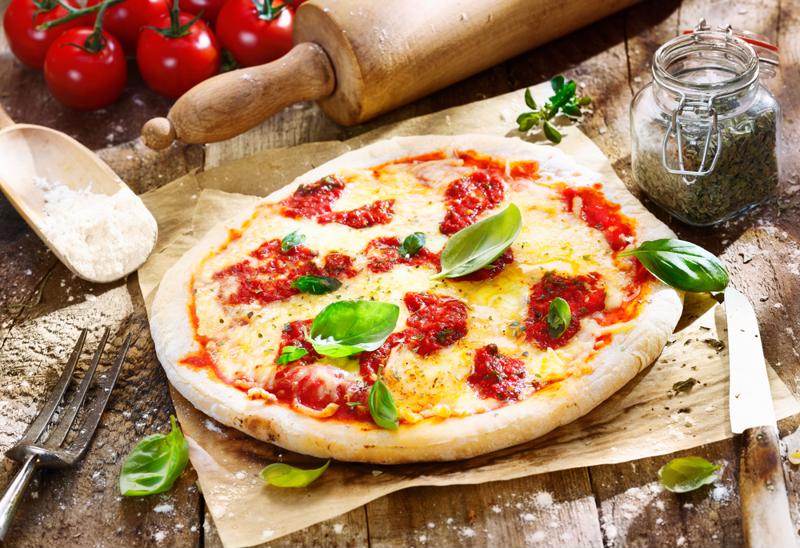Italian cuisine is world renowned for the bold flavors of beloved dishes like pizza, lasagna and parmigana. For students in culinary school, however, it’s important to dig deeper into the dishes associated with this hotbed of dining excellence. For one thing, they should understand that what most people think of as “Italian cuisine” in fact draws on many different traditions associated with the nation’s 20 regions. Read on to learn about some of the foods that have come out of these areas:
Northern Italy
Dishes from the northern regions tend to rely on the heavy use of veal, beef, cow’s milk cheeses and butter or lard. With a climate suitable for cultivating an abundance of rice and corn, the area is better known for its array of polenta and rice than for pasta.
“Northern Italy is known for its polenta and rice.”
Polenta is a major part of the region’s food culture, and as with any traditional dish, there are plenty of variations. The Guardian gave directions that begin with boiling a mixture of milk, water and salt. Gradually add cornmeal, whisking as you pour it in. Reduce the heat and cook for 35 to 45 minutes, stirring at four or five minute intervals.
Osso bucco is an iconic item with roots in the northwestern region of Lombardy. This dish features braised veal shanks with vegetables like onion, celery and carrots. Most recipes, such as the one provided by Giada de Laurentiis, start with dredging the veal in flour. Brown the meat before cooking the vegetables, and then pour in white wine to create the braising liquid.
Central Italy
Tuscany was the cradle of the Renaissance, and it is also home to many great dishes. The area is known for simple and rustic, yet irresistible, foods with a strong emphasis on bread, olive oil, sheep’s milk cheese, beef and goat’s meat.
Among the most celebrated of the region’s stripped-down cuisine is steak Florentine. Saveur’s instructions call for a half-inch thick, bone-in porterhouse steak. Coat the meat with olive oil and season with salt and pepper. Grill over high heat for four to six minutes before using rosemary sprigs to add more oil. After another four to six minutes, remove the steak from the grill and let it rest before slicing and serving with lemon wedges.
Ribollita is a thick vegetable soup featuring cannellini beans and day-old bread. According to Ina Garten, you should first soak the beans in cold water overnight. Then, simmer them in a large pot for an hour, adding salt in the last 15 minutes. Cook pancetta with vegetables and puree half of the beans. Prepare the broth by mixing the cooking liquid from the beans with chicken stock. Combine all the elements and simmer for about 30 minutes. During the last 10 minutes, throw in the bread.
 Traditional Neapolitan pizza has simple ingredients and a moist dough.
Traditional Neapolitan pizza has simple ingredients and a moist dough.Southern Italy
Some of the foods that are most closely associated with Italian dining come from the southern regions, which include Campania – with its capital of Naples – and the island of Sicily. Campania is famed for foods that incorporate local produce like San Marzano tomatoes, eggplant, peppers, and figs. The traditional Sicilian diet, meanwhile, is packed with spicy tomato sauce, citrus fruits, almonds and olives, plus plenty of pork, lamb, rabbit and veal.
Undoubtedly the most famous and beloved food to emerge from the South is pizza. As Serious Eats explained, the criteria for what makes an authentic Neapolitan pizza can get deeply involved. The key features, though, include a moist dough and minimal toppings cooked in a wood-fired oven. The most common varieties are the pizza marinara – with tomatoes, olive oil, oregano and garlic – and the pizza margherita, which has tomatoes, olive oil, basil and mozzarella made from water buffalo milk.
Veal Marsala is a signature dish from Sicily, named for the wine used in the sauce. Food & Wine instructed preparing the sauce by briefly cooking shallots and thyme before pouring in the wine. When the mixture reduces, add stock and reduce again. Then, mix in heavy cream.
There are countless ways to make classic Italian dishes. As you master new skills in an accredited online culinary school, you will discover the approaches that work best for you. With a solid background knowledge, you’ll be well on your way to coming up with delicious spins on many classic items.


